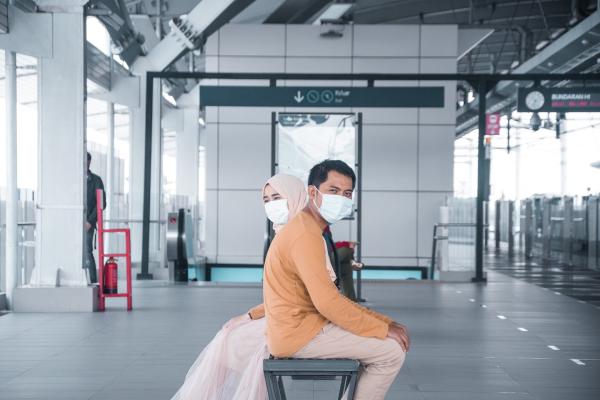Vaccination and masks
The ongoing argument between two physicians, Senator Rand Paul and Anthony Fauci, illustrate the problem. Dr. Paul contends that if you have been vaccinated, you need not wear a mask. Dr. Fauci says we must continue to mask. First, let us look at the science we might consider and then at the messaging problem.
None of the vaccines are 100% effective in preventing COVID-19. None. The Pfizer and Moderna vaccines are both basically 95% effective “at preventing laboratory-confirmed COVID-19 illness in people.” 5% of people will still become infected, no one died. But that 5% could act as transmitters of the virus to others; they had undoubtedly developed enough viral multiplication to be identified. This remaining small risk could be most easily mitigated by wearing a mask, which, I hasten to remind you, primarily protects you and me from the one wearing the mask.
Dr. Paul wants to move the public towards vaccination by holding our a “reward,” you will no longer need to wear a mask. For him, that small group where the vaccine is ineffective is not important, especially if everyone around them is vaccinated. Dr. Fauci also wants to move the public towards vaccination. Still, for him, the 5% that may act as transmitters is too great a risk and, therefore, to be safe, out of an abundance of caution, whatever catchphrase you wish to use, recommends we continue to wear masks.
This is not an uncommon problem when physicians speak with patients. As a physician, my responsibility is to advise my patient about their choices and what I believe is the best path forward. I have to communicate this information to people with varying education, experience, and fears. I have to balance my hoped-for outcome with a relatively known risk – 5% can be both too great or of no concern; it depends on the outcome. [1]
Dr. Paul is speaking as a physician to the patient across the desk. Dr. Fauci is talking to the public, a very different audience. It is the different audiences that require different messages. Messaging involves both a speaker and a listener. When I speak to my patient, my word choices reflect my understanding of what they are ready to hear. Telling a patient they might lose their leg is often hinted at before it is explicitly mentioned. “Hanging crepe” was the term used to describe those discussions with families that could not at that moment accept that their loved one was past saving and would linger for a few days at most. Dr. Paul called that behavior by a physician “a noble lie.”
Every statement from the CDC is carefully parsed, searching for meaning as one would in tea leaves. In today’s highly politicized climate, our words can have additional emotional, triggering meanings. What is “common sense” to one is “cherry-picking science” to another. Some hear noble; others hear lie.
Perfection Is The Enemy Of Good
Dr. Paul, in his off-hand way, dismissed Dr. Fauci’s comments about masks as “theater.” A properly fitted N95 mask will filter out 95% of the pathogens of concern. But, in all of your observations, how many individuals are wearing an N95 mask that is indeed correctly fitted. It is doubtful that if you have a beard, that the fit is proper. Wearing it below your nose or somewhere on your chin is not correct either. Again, if I am speaking directly to you, I can show you how to wear it properly and make sure it is indeed an N95. But if I have to talk as a public health official, as Dr. Fauci’s role requires, my audience will not understand the nuances of fit and make sure that it is a certified N95 product. Because perfection is the enemy of good, it is easier to ask people to wear two masks. Will two or three guarantee the efficacy of a properly worn N95? Probably not, but it will get us a lot closer to our target.
[1] If your chance of dying from treatment is 30%, a 5% risk is probably acceptable; if the risk of dying from treatment is 2%, 5% more than doubles your peril – it is too great.




